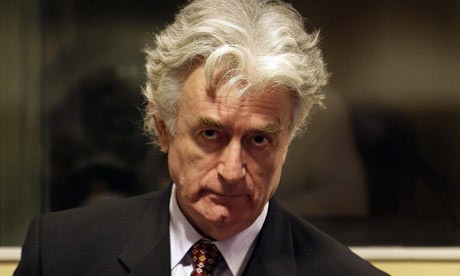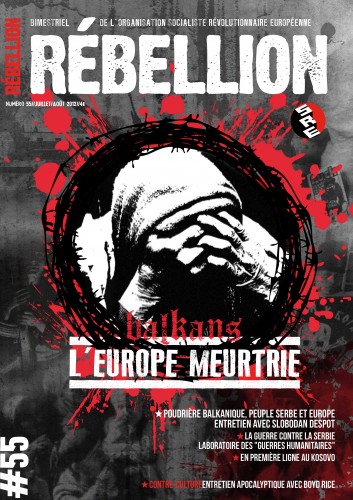The scout caught his breath as he sighted the Greeks in the western end of the pass. His trepidation gave way to surprise as he looked more closely. There were only about 300 of them, arrayed before a wall which blocked further access to the pass, and they were behaving most oddly. Some, stripped naked, performed exercises, like athletes before a contest. Others combed their long, fair hair. They gave their observer no notice.
Were these the vaunted Spartans? The Persian turned his horse and rode back to the imperial camp.
Xerxes received the scout’s report with undisguised amazement. The behavior of the Greeks seemed impossible to account for. Until now his advance down the northern coast of Greece had resembled a triumphal procession. City after city had submitted with the symbolic offering of earth and water. When at last the Greeks seemed disposed to stand and fight, their most gallant soldiers, the Spartans, were conducting themselves more like madmen than warriors.
The emperor summoned Demaratus, who had been a king of the Spartans until his involvement in political intrigues had forced him to flee to the Persian court. While Xerxes listened from his golden throne, Demaratus spoke of the Spartans:
“Once before, when we began our march against Greece, you heard me speak of these men. I told you then how this enterprise would work out, and you laughed at me. I strive for nothing, my lord, more earnestly than to observe the truth in your presence; so hear me once more. These men have come to fight us for possession of the pass, and for that struggle they are preparing. It is the common practice for the Spartans to pay careful attention to their hair when they are about to risk their lives. But I assure you that if you can defeat these men and the rest of the Spartans who are still at home, there is no other people in the world who will dare to stand firm or lift a hand against you. You have now to deal with the finest kingdom in Greece, and with the bravest men.”
The year was 480 B.C. During the previous three years Xerxes had assembled what promised to be the mightiest military force the world had ever seen, drawn from every corner of his far-flung realms. Modern historians are properly skeptical of the millions of soldiers and sailors meticulously enumerated by the great historian Herodotus, and of his endless catalogs of camel-riding Arabs, trousered Scythians, and frizzy-haired Ethiopians. Nevertheless, Herodotus’ account gives dramatic expression to the feeling of the Greeks that all the numberless, swarthy hordes of Africa and Asia were advancing on them.
Ten years before, the Athenians, who had aroused the wrath of Xerxes’ father and predecessor, Darius, by aiding their Ionian Greek cousins of Asia Minor in an unsuccessful revolt against their Persian overlords, had all but annihilated a Persian punitive expedition at Marathon, a few miles from Athens. It was Xerxes’ purpose to avenge that defeat and to crush the power of the impudent Hellenes, as the Greeks called themselves, once and for all.
There was more to it than that. Xerxes was a Persian, an Aryan, of the noble Achaemenid line, descended ultimately from the same race as the Hellenes. His ancestors had ranged the mountains and steppes of Iran and Central Asia, proud and free.
But as the Persians had increased their power and then wrested the great empire of the Near East from the Babylonians, their kings had fallen prey to the power and the regalia and the idea of empire. Once the Iranian leaders had regarded themselves, and been regarded, as first among Aryan equals. Now his fellow Persians, like all his other subjects, abased themselves at Xerxes’ feet. And like his imperial predecessors, Xerxes intended to make the remainder of the known world do the same.
As the Persian army moved ponderously across the great bridges with which the emperor had joined Europe and Asia at the Dardanelles, the Hellenes hesitated. Xerxes had accompanied the exertions of his engineers with a diplomatic campaign. While his engineers built the Dardanelles bridges and dug a canal across the Acte peninsula in Thrace by which his fleet could circumvent the stormy cape, his diplomats worked to promote defeatism in Greece. Argos and Crete promised to stay neutral, and the priestess of Delphi muttered gloomy oracles of Persian conquest.
The delegates from the Hellenic city-states who gathered at the Corinthian Isthmus in the spring of 480 were at first divided as to their course of action. The Peloponnesians were for guarding only their southern peninsula, while the Athenians and their allies on the neighboring island of Euboea pressed for an expedition to the north of Greece. Eventually the congress of diplomatic representatives agreed to dispatch a joint force of Athenians and Peloponnesians to the Vale of Tempe, in northern Thessaly, which seemed a fit place to bar the Persians’ way from Macedonia into Greece.
At Tempe, to their dismay, the Hellenes found that other passes afforded the invader entry into Hellas from the north. As the Greek contingent retreated to the south, the northern Greeks abandoned their determination to resist and submitted to the Persian emperor.
As Xerxes’ forces began to advance south from Macedonia into Greece, the Greeks were thrown into something of a panic. Following their first contact with the numerically superior Persian fleet, the Greek navy fled down the straits between Euboea and the Greek mainland. Only the loss of a considerable number of the Persian ships in a storm off the Artemisian cape at the northern tip of Euboea emboldened the Hellenic fleet to sail northward to face the enemy once more. In the meantime the Athenians made plans to evacuate their population to the islands of Salamis and Aegina to the southwest.
One force remained in the field to confront the Persians with determined opposition: Leonidas, king of the Spartans, had occupied the crucial pass at Thermopylae.
The gateway from northern to central Greece, Thermopylae stretched more than four miles between the towering wall of Mt. Oeta and the waves of the Malian Gulf. At both its eastern and western extremities, the pass contracted to a narrow, easily defended pathway. For much of the intervening distance, the pass billowed out into a broader expanse. Here there were a number of thermal springs, both salt and sulfur, from which Thermopylae derived its name, which means “hot gates.”
The garrison which held Thermopylae was at first considerably larger than the 300 Spartans whom the Persian scout had glimpsed at the western entrance to the pass. Behind the wall, which the Greeks had hastily rebuilt after occupying the pass, and along the ridge of Mt. Oeta, Leonidas had stationed nearly 7000 troops. About half of them were men from Sparta’s neighbor cities in the Peloponnesus. The rest were Boeotians from Thebes and Thespiae in central Greece, or hailed from nearby Phocis and Locris.
Although their Greek allies were many times more numerous, Leonidas and his Spartan guard formed the backbone of the Hellenic defense force. In recognition of the peril attending their mission, the 300 consisted exclusively of men with living male heirs, so that names and bloodlines would be carried on if they fell. Leonidas and his men were the elite of an elite, and on their example would depend the conduct of the other Greeks at Thermopylae.
What manner of men were the Spartans, that Xerxes hesitated to pit his myriads against their hundreds?
The origins of Sparta are shrouded in the mists of Greek antiquity, but it is certain that Sparta was founded by the Dorians. The last wave of Hellenic migrants from the north, the Dorians swept their Greek predecessors, the Achaeans, westward into Attica and Asia Minor. From the time of the Dorian migrations, the traditional division of the Hellenes into Dorians, Ionians, and Aeolians begins to take shape.
The Dorians were probably more Nordic in type than the other Greek tribes. As the great classicist Werner Jaeger wrote, “The Dorian race gave Pindar [the great poet of Thebes] his ideal of the fair-haired warrior of proud descent.” As Jaeger implies, the Dorians—above all those in Sparta—placed a premium on the preservation and improvement of their native stock.
One branch of the Dorians invaded the district of Laconia in the southeastern Peloponnesus. In the words of the great historian J. B. Bury, “The Dorians took possession of the rich vale of the Eurotas, and keeping their own Dorian stock pure from the admixture of alien blood reduced all the inhabitants to the condition of subjects. . . . The eminent quality which distinguished the Dorians from the other branches of the Greek race was that which we call ‘character’; and it was in Laconia that this quality most fully displayed and developed itself, for here the Dorian seems to have remained more purely Dorian.”
The city of Sparta arose from the amalgamation of several neighboring villages along the Eurotas. The Spartans gradually came to wield political power over the other Dorians in Laconia, the so-called perioeci, who nevertheless retained some degree of self-government and ranked as Laconian, or Lacedaimonian, citizens.
Not so the racially alien helots, the pre-Dorian inhabitants of Laconia, whom the Spartans reduced to serfdom and denied all political rights. The helots bore their servitude grudgingly and threatened constantly to revolt and overthrow their masters. To contain the helots’ revolutionary inclinations, the Spartans organized periodic campaigns, containing something of the spirit of both the fox hunt and the pogrom, in which their young men were given free rein to wreak havoc and eliminate the more truculent and dangerous of their serfs.
During the eighth century, the Dorians conquered the Messenians, who had occupied the remainder of the southern Peloponnesus. A century later, they suppressed a Messenian uprising only after a long and difficult war. From that time on, constrained to manage their own helots and the unruly Messenians as well, the Spartans evolved a unique ethos involving both the preservation of their racial integrity and a comprehensive system of military education and organization.
To a greater extent than any state before or since, the Spartans safeguarded and improved their biological heritage with an uncompromising eugenics program. Marriage outside the Spartan racial community was forbidden, nor was immigration tolerated. There were penalties for celibacy and late marriage, while men who fathered several children could be exempted from standing watch at night, and even from paying taxes.
The Spartans required that the newborn be presented for inspection by officers of the state. Sickly or deformed offspring were left to die.
According to the ancient biographer Plutarch, Lycurgus, the legendary lawgiver of Sparta, made even further provisions for healthy progeny, which continued to be adhered to in classical times. After describing the chaste upbringing of young Spartans of both sexes, Plutarch continues:
After guarding marriage with this modesty and reserve, he [Lycurgus] was equally careful to banish empty and womanish jealousy. For this object, excluding all licentious disorders, he made it, nevertheless, honorable for men to give the use of their wives to those whom they should think fit, so that they might have children by them. . . . Lycurgus allowed a man who was advanced in years and had a young wife to recommend some virtuous and approved young man, that she might have a child by him, who might inherit the good qualities of the father, and be a son to himself. On the other side, an honest man who had love for a married woman upon account of her modesty and the well-favoredness of her children, might, without formality, beg her company of her husband, that he might raise, as it were, from this plot of good ground, worthy and well-allied children for himself. And indeed, Lycurgus was of a persuasion that children were not so much the property of their parents as of the whole commonwealth, and, therefore, would not have his citizens begot by the first-comers, but by the best men that could be found; the laws of other nations seemed to him very absurd and inconsistent, where people would be so solicitous for their dogs and horses as to exert interest and to pay money to procure fine breeding, and yet kept their wives shut up, to be made mothers only by themselves, who might be foolish, infirm, or diseased; as if it were not apparent that children of a bad breed would prove their bad qualities first upon those who kept and were rearing them, and well-born children, in like manner, their good qualities.
As might be gathered, the women of Sparta were regarded, first of all, as the mothers of Spartan children. The young women were educated for childbearing. They engaged in vigorous gymnastic exercises and dances, often while nude, to the scandal of the other Greeks, although the Spartan women were proverbial for their chastity. Doubtless in consequence of heredity as well as a carefully cultivated physical fitness, the women of Sparta were accounted the most beautiful in Hellas.
Despite the emphasis on their role as mothers, Sparta’s women were the freest in Greece. Indeed, they were accused of dominating the Spartan men. When Gorgo, the wife of Leonidas, was so taunted, she summed up the situation of the Spartan women succinctly: “We rule men with good reason, for we are the only women who bring forth men.”
The men of Sparta were raised to be soldiers. They left the management of commercial affairs and the trades to the perioeci and devoted themselves exclusively to the business of government and war. Each Spartan citizen supported himself from a hereditary plot of land, farmed by the helots, which could not be alienated by sale or division.
Between the ages of seven and twenty the Spartans received their soldierly training. They acquired far more than a mechanical mastery of military skills. Their instructors strove to inculcate in their cadets an absolute devotion to Sparta, the ability to endure any hardship, and an unwavering courage on the battlefield.
To keep the young men on their mettle, the Spartan training system played off the exigencies of discipline against the defiant and adventurous spirit of youth. Young Spartans were compelled to steal their food, yet subjected to severe punishment if they were caught, a seeming paradox epitomized in the story of the Spartan boy who let the fox he concealed under his cloak tear at his vitals rather than give himself away. The Spartan school was a cruel but effective one, for it caught its students up in the enthusiasm of constant challenge and danger.
When he reached the age of 20 the young Spartan became a full-fledged soldier. For the next ten years he lived the barracks life with his comrades. Allowed to take a wife, he saw her only during brief and furtive visits. In times of peace, the young men were instructors to the Spartan boys.
On his thirtieth birthday the Spartan was invested with the remainder of his civic rights and duties. Thenceforth he attended the apella, the assembly of the people, and could vote on measures proposed by the two kings or by the ephoroi, Sparta’s five-man judiciary. The Spartan could at last establish his own household, although still bound to dine in common with his peers.
The principal fare at these communal messes was a black broth much favored by the Spartans, although the other Hellenes found it hard to stomach. (After sampling it a visitor from opulent Sybarisis supposed to have exclaimed, “Now I know why Spartans have no fear of death!”)
The Spartans spiced their meals with a dry and pithy wit renowned through Hellas as much for its substance as for its sting. As Plutarch tells it, Lycurgus replied to a Spartan who had advocated democracy, “Begin, friend, and set it up in your family.” Or, as the Spartan women are supposed to have said when handing their sons their shields before they marched to battle, “With it or on it.”
Spartan law reinforced its citizens’ contempt for luxury by banning private ownership of gold and silver. The result, according to Plutarch, was that “merchants sent no shiploads into Laconian ports; no rhetoric-master, no itinerant fortune-teller, no harlot-monger, or gold- or silver-smith, engraver, or jeweler, set foot in a country that had no money; so that luxury, deprived little by little of that which fed and fomented it, wasted to nothing and died away of itself.” Like the Spartans’ wills, their coins were made of iron.
Sparta’s military life did not stifle the minds and spirits of its citizens. Early in its history Sparta was a leading center of poetry and music. Terpander and Alcman brought the lyre and lyric from Asia Minor to the banks of the Eurotas. Lame Tyrtaeus, Lacedaimon’s native son, shaped his country’s ethos with his martial songs. Choral songs and dances carried on, in which the Spartan men melodically affirmed their patriotism, and the Spartan maidens urged them on to future deeds of valor. Rightly Pindar sang of Sparta:
“Councils of wise elders here, /And the young men’s conquering spear, / And dance, and song, and joy appear.”
It was not so much the Spartans’ works of art as the Spartan ideal which won the admiration of great Hellenic thinkers such as Plato. There was something noble in the stem simplicity of the Spartan way of life. Sparta’s fundamental laws, the rhetroi, which Lycurgus was said to have received direct from “golden-haired Apollo,” were few, unwritten, and to the point. Their purpose, to mold men of character in the service of the common good, struck a responsive chord through allHellas.
It is not difficult to detect in the wistful praise the Hellenes paid to Sparta a longing for the values and uses of their Indo-European forebears. Outside of Sparta these had all too often been forgotten amid the lures of Oriental luxury, or lost forever due to mixing of Hellenic blood. The Spartans, just as they transformed the rough-hewn, wooden longhouses of their northern ancestors into gleaming Doric temples, developed from their innate, racial outlook a guide and bulwark for their state.
And, of course, it was on the battlefield that the Spartan arete, or manly excellence, found its chief expression. The Spartans asked not how many the enemy were, but only where they were. They were ignorant of surrender, but knew well how to die.
But let Plutarch speak once more: “It was at once a magnificent and a terrible sight to see them march on to the tune of their flutes, without any disorder in their ranks, any discomposure in their minds, or change in their countenances, calmly and cheerfully moving with the music to the deadly fight. Men in this temper were not likely to be possessed by fear or any transport of fury, but with the deliberate valor of hope and assurance, as if some divinity were attending and conducting them.”
Such were the men who faced Xerxes and his host atThermopylae.
Xerxes waited for four days, in the hope that the Greeks would abandon their position, as they had in Thessaly. His attempt at psychological warfare was lost on the Spartans. When a fearful Greek from the surrounding countryside informed the Spartan Dieneces that “so many are the Persian archers their arrows blot out the sun,” Dieneces was unperturbed: “If the Persians hide the sun, we shall have our battle in the shade.”
On the fifth day, seething with anger at the Greeks’ impertinence, Xerxes sent forth an assault force of Medes and Cissians, Iranian kindred to his own Persians.
Xerxes’ troops stormed the western gate to Thermopylae with a valor exceeding their skill in combat. The Spartans met and overwhelmed them in the narrow space between the rocks and the water. Well armored, wielding their long spears expertly, the Spartan heavy infantry was more than a match for the Iranians with their short swords and wicker shields. The Spartans cut them down by the hundreds at close quarters.
From a neighboring hill, seated on his throne of gold, Xerxes watched the fighting, fuming at what he deemed his soldiers’ incompetence. To bring the matter to a quick end, he ordered his elite guard, the King’s Immortals, forward to the deadly pass. Again the Spartans outfought the emperor’s men.
All at once the Spartans turned and fled, seemingly in panicky confusion. With a shout, the Immortals rushed forward in disarray. But the Spartans were all around them in an instant, and they cut the emperor’s picked troops to pieces. According to Herodotus, Xerxes, watching from his hill, “leapt to his feet three times, in terror for his army.”
The next day’s fighting went no better for the Persians. The Greek allies took turns spelling the Spartans at the western approach, and once again the Hellenes reaped a bloody harvest. As the sun set over the western mountains, the waters of the gulf lapped crimson at the heaps of Persians on the shore.
That night, as Xerxes puzzled bitterly how to break the death grip of the Greeks on Thermopylae, a traitor came forth from a local district, looking for a rich reward. The information he gave the emperor was the doom of the men of Thermopylae.
Ephialtes the Malian revealed to Xerxes the existence of a path over the hills and along the crest of Mt. Oetato the rear of Thermopylae. The path was not unknown to Thermopylae’s defenders, and Leonidas had stationed the Phocian troops along Mt.Oela’s ridge to ward off enemy attempts to flank his forces in the pass.
At dawn the next morning, the Phocians heard the sound of marching feet advancing through the fallen leaves which carpeted the floor of the oak forest below the summit of Mt. Oeta. As the Greeks sprang to arm themselves, the Immortals, their ranks reinforced, rushed up the mountainside. The Phocians retreated to the highest point on Mt. Oetaunder a hail of Persian arrows, but the emperor’s picked troops disdained to close with them. Swerving to the left, they made their way down the mountain to a point east of Thermopylae’s rear approach. The Hellenes in the pass were trapped between two Persian forces.
Leonidas learned of the threat from his lookouts along Mt. Oeta and stragglers from the Phocian contingent. He quickly took stock of the changed circumstances. It was evident to the Spartan king that the pass could not be held much longer. The Greeks to the south had need of the troops engaged in Thermopylae’s defense.
But there were other considerations. Leonidas and his 300 men were first of all Spartans. The laws and customs of their native city bade them to conquer or die at the posts assigned them, whatever the superiority of the enemy’s numbers. And there was an oracle, made known at the outset of the Persian invasion, which prophesied that Sparta or a Spartan king must fall in the coming conflict.
Leonidas dismissed the allied troops, all but the men of Thebes and Thespiae. The remainder of the Peloponnesians, as well as the Phocians and Locrians, made their way across the hills between the Persian armies, to fight again another day.
The next morning, after Xerxes had poured a libation to the rising sun, his men stormed Thermopylae from both sides. Scornful of their own lives, Leonidas and his men surged out to meet the Persians on the open ground before the narrow entrance to the pass. Godlike the Spartans swept forward, cutting a swath through the enemies’ ranks. Again they exacted a fearful toll, as the Persian officers drove their men on from the rear, making liberal use of their whips.
The Hellenes fought with reckless courage and with grim determination. When their spears splintered and broke, they fought on with their swords. Leonidas fell, and a fierce struggle raged over the body of the Spartan king. Four times the Persians were repulsed, and many of their leaders, including two of Xerxes’ brothers, were slain.
Gradually the remaining Spartans, bearing the fallen Leonidas, fell back to a small elevation within the pass. There they made a last stand. Beside them fought the brave citizens of Thespiae. The Thebans covered themselves with disgrace by throwing down their arms and submitting abjectly to Xerxes.
After a short but furious resistance, the Spartans and the Thespians were annihilated by the swarming Persian infantry. When all was still, and Xerxes walked among the dead on the battleground he had until then avoided, the Persian emperor was stricken with anger at the tenacity which Leonidas had displayed in thwarting his imperious will. He ordered the Spartan king beheaded, and his head fixed on a stake.
Once more Xerxes summoned Demaratus.
“Demaratus,” he began, “you are a good man. All you said has turned out true. Now tell me, how many men of Lacedaimon remain, and are they all such warriors as these fallen men?”
“Sire,” Demaratus replied, “there are many men and towns in Lacedaimon. But I will tell you what you really want to know: Sparta alone boasts eight thousand men. All of them are the equals of the men who fought here.”
When Xerxes heard this he paled. The memory of Demaratus’s words must have been much with him during the next few months, until Leonidas’ Spartan comrades avenged him at the climactic battle of Plataea and drove the Persian horde forever from Hellenic soil.
The Greeks erected several monuments at Thermopylae, bearing suitable inscriptions. A lion marked the spot where Leonidas perished. But it was the marker the Spartans raised to the memory of their 300 countrymen which best evokes the spirit of their people. With laconic brevity it read:
“Wanderer, if you come to Sparta, tell them there / You have seen us lying here, obedient to their laws.”
Source: Kevin Alfred Strom, ed., The Best of Attack! and National Vanguard Tabloid (Arlington, Va.: National Vanguard Books, 1984), pp. 127-130.




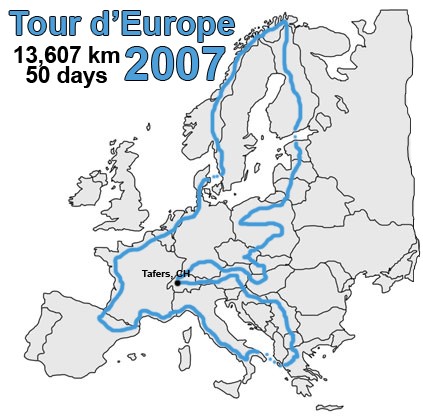

 del.icio.us
del.icio.us
 Digg
Digg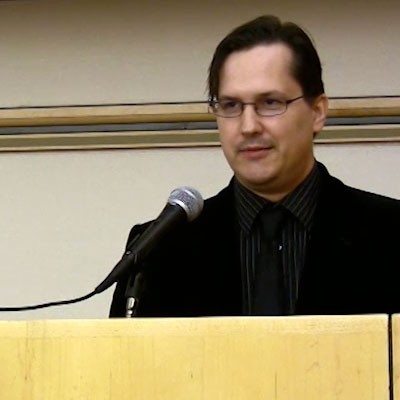

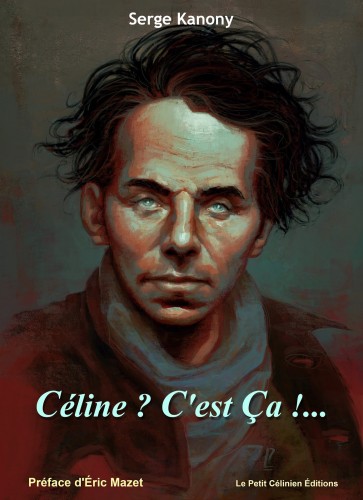




 Bauchau participe aux combats de la résistance dans la région de Brumagne (près de Namur), y est blessé. Mais, malgré cet engagement, il doit rendre des comptes à l’auditorat militaire, pour sa participation au SVTW et surtout, probablement, pour avoir signé le manifeste de fondation du “parti unique (avorté) des provinces romanes”. Il échappe à tout jugement mais est rétrogradé: de Lieutenant, il passe sergeant. Il en est terriblement meurtri. Sa patrie, qu’il a toujours voulu servir, le dégoûte. Il s’installe à Paris dès 1946. Mais cet exil, bien que captivant sur le plan intellectuel puisque Bauchau est éditeur dans la capitale française, est néanmoins marqué par le désarroi: c’est une déchirure, un sentiment inaccepté de culpabilité, un tiraillement constant entre les sentiments paradoxaux (l’oxymore dit-on aujourd’hui) d’avoir fait son devoir en toute loyauté et d’avoir, malgré cela, été considéré comme un “traître”, voire, au mieux, comme un “demi-traître”, dont on se passera dorénavant des services, que l’on réduira au silence et à ne plus être qu’une sorte de citoyen de seconde zone, dont on ne reconnaîtra pas la valeur intrinsèque. A ce malaise tenace, Bauchau échappera en suivant un traitement psychanalytique chez Blanche Reverchon-Jouve. Celle-ci, d’inspiration jungienne, lui fera prendre conscience de sa personnalité vraie: sa vocation n’était pas de faire de la politique, de devenir un chef au sens où on l’entendait dans les années 30, mais d’écrire. Seules l’écriture et la poésie lui feront surmonter cette “déchirure”, qu’il lui faudra accepter et en laquelle, disait la psychanalyste française, il devra en permanence se situer pour produire son oeuvre: ce sont les sentiments de “déchirure” qui font l’excellence de l’écrivain et non pas les “certitudes” impavides de l’homme politisé.
Bauchau participe aux combats de la résistance dans la région de Brumagne (près de Namur), y est blessé. Mais, malgré cet engagement, il doit rendre des comptes à l’auditorat militaire, pour sa participation au SVTW et surtout, probablement, pour avoir signé le manifeste de fondation du “parti unique (avorté) des provinces romanes”. Il échappe à tout jugement mais est rétrogradé: de Lieutenant, il passe sergeant. Il en est terriblement meurtri. Sa patrie, qu’il a toujours voulu servir, le dégoûte. Il s’installe à Paris dès 1946. Mais cet exil, bien que captivant sur le plan intellectuel puisque Bauchau est éditeur dans la capitale française, est néanmoins marqué par le désarroi: c’est une déchirure, un sentiment inaccepté de culpabilité, un tiraillement constant entre les sentiments paradoxaux (l’oxymore dit-on aujourd’hui) d’avoir fait son devoir en toute loyauté et d’avoir, malgré cela, été considéré comme un “traître”, voire, au mieux, comme un “demi-traître”, dont on se passera dorénavant des services, que l’on réduira au silence et à ne plus être qu’une sorte de citoyen de seconde zone, dont on ne reconnaîtra pas la valeur intrinsèque. A ce malaise tenace, Bauchau échappera en suivant un traitement psychanalytique chez Blanche Reverchon-Jouve. Celle-ci, d’inspiration jungienne, lui fera prendre conscience de sa personnalité vraie: sa vocation n’était pas de faire de la politique, de devenir un chef au sens où on l’entendait dans les années 30, mais d’écrire. Seules l’écriture et la poésie lui feront surmonter cette “déchirure”, qu’il lui faudra accepter et en laquelle, disait la psychanalyste française, il devra en permanence se situer pour produire son oeuvre: ce sont les sentiments de “déchirure” qui font l’excellence de l’écrivain et non pas les “certitudes” impavides de l’homme politisé. 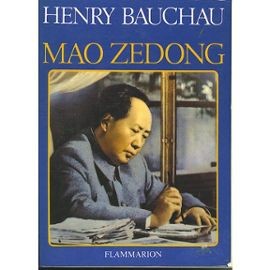 En 1973, l’Institut Montesano ferme ses portes: la crise du dollar ne permettant plus aux familles américaines fortunées d’envoyer en Suisse des jeunes filles désirant s’immerger dans la culture européenne traditionnelle. A cette même époque, comme beaucoup d’anciennes figures de la droite à connotations personnalistes, Bauchau subit une tentation maoïste, une sorte de tropisme chinois (comme Hergé!) qui va bien au-delà des travestissements marxistes que prenait la Chine des années 50, 60 et 70. Notre auteur s’attèle alors à la rédaction d’une biographie du leader révolutionnaire chinois, Mao Tse-Toung, qu’il n’achèvera qu’en 1980, quand les engouements pour le “Grand Timonnier” n’étaient déjà plus qu’un souvenir (voire un objet de moquerie, comme dans les caricatures d’un humoriste flamboyant comme Lauzier).
En 1973, l’Institut Montesano ferme ses portes: la crise du dollar ne permettant plus aux familles américaines fortunées d’envoyer en Suisse des jeunes filles désirant s’immerger dans la culture européenne traditionnelle. A cette même époque, comme beaucoup d’anciennes figures de la droite à connotations personnalistes, Bauchau subit une tentation maoïste, une sorte de tropisme chinois (comme Hergé!) qui va bien au-delà des travestissements marxistes que prenait la Chine des années 50, 60 et 70. Notre auteur s’attèle alors à la rédaction d’une biographie du leader révolutionnaire chinois, Mao Tse-Toung, qu’il n’achèvera qu’en 1980, quand les engouements pour le “Grand Timonnier” n’étaient déjà plus qu’un souvenir (voire un objet de moquerie, comme dans les caricatures d’un humoriste flamboyant comme Lauzier).  Bauchau est également un mémorialiste de premier plan, que nous pourrions comparer à Ernst Jünger (qu’il cite assez souvent). Les journaux de Bauchau permettent effectivement de suivre à la trace le cheminement mental et intellectuel de l’auteur: en les lisant, on perçoit de plus en plus une immersion dans les mystiques médiévales —et il cite alors fort souvent Maître Eckart— et dans les sagesses de l’Orient, surtout chinois. On perçoit également en filigrane une lecture attentive de l’oeuvre de Martin Heidegger. Ce passage, à l’âge mûr, de la frénésie politique (politicienne?) à l’approfondissement mystique est un parallèle de plus à signaler entre le Wallon belge Bauchau et l’Allemand Jünger.
Bauchau est également un mémorialiste de premier plan, que nous pourrions comparer à Ernst Jünger (qu’il cite assez souvent). Les journaux de Bauchau permettent effectivement de suivre à la trace le cheminement mental et intellectuel de l’auteur: en les lisant, on perçoit de plus en plus une immersion dans les mystiques médiévales —et il cite alors fort souvent Maître Eckart— et dans les sagesses de l’Orient, surtout chinois. On perçoit également en filigrane une lecture attentive de l’oeuvre de Martin Heidegger. Ce passage, à l’âge mûr, de la frénésie politique (politicienne?) à l’approfondissement mystique est un parallèle de plus à signaler entre le Wallon belge Bauchau et l’Allemand Jünger. 

